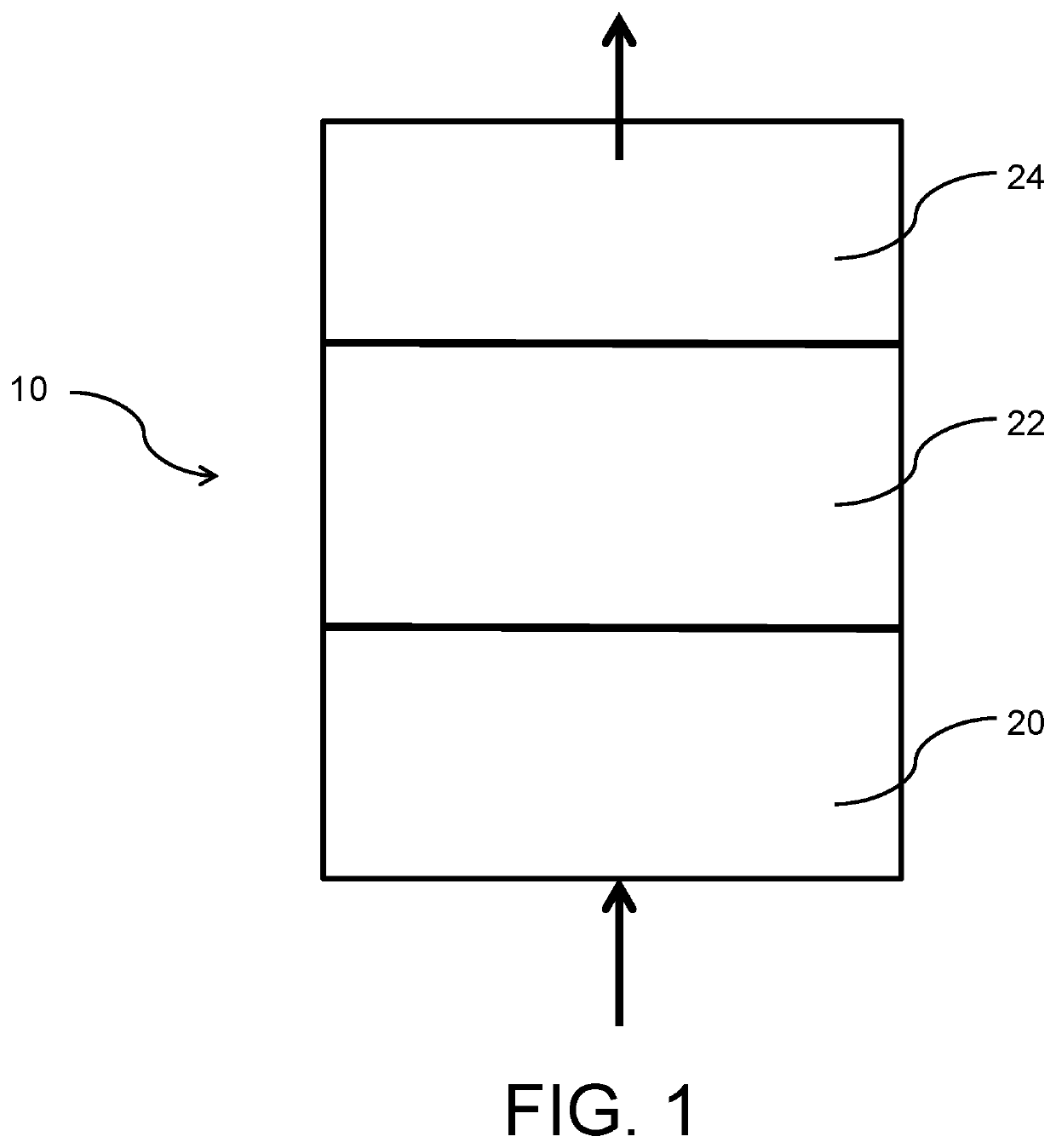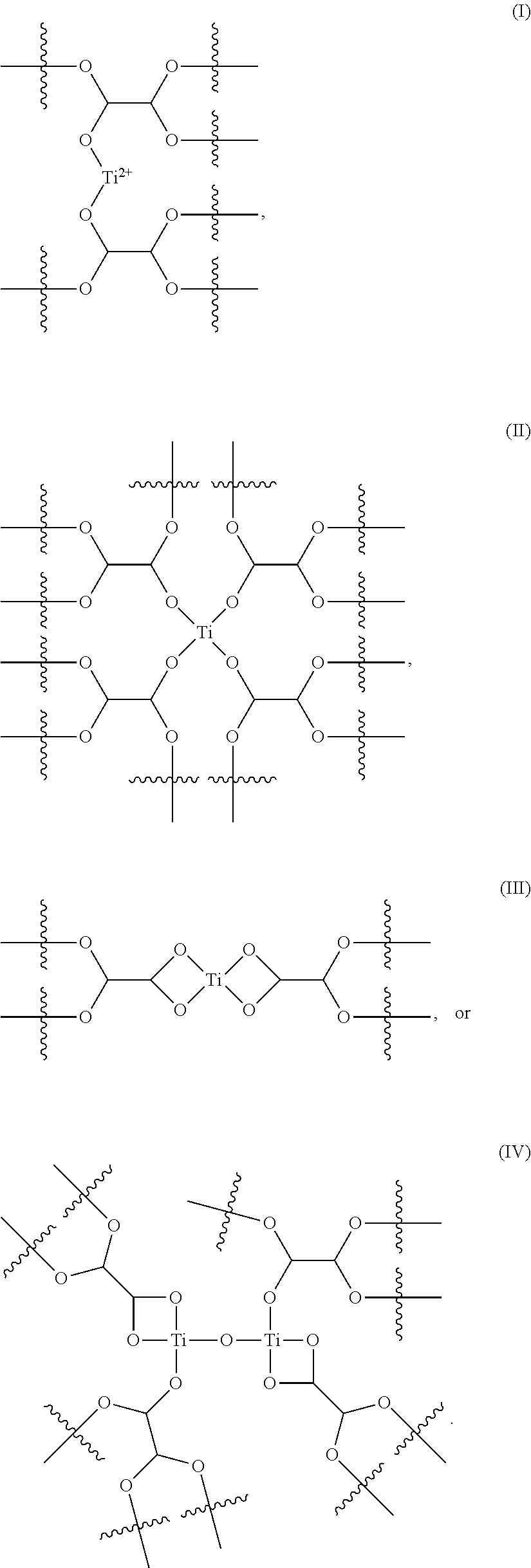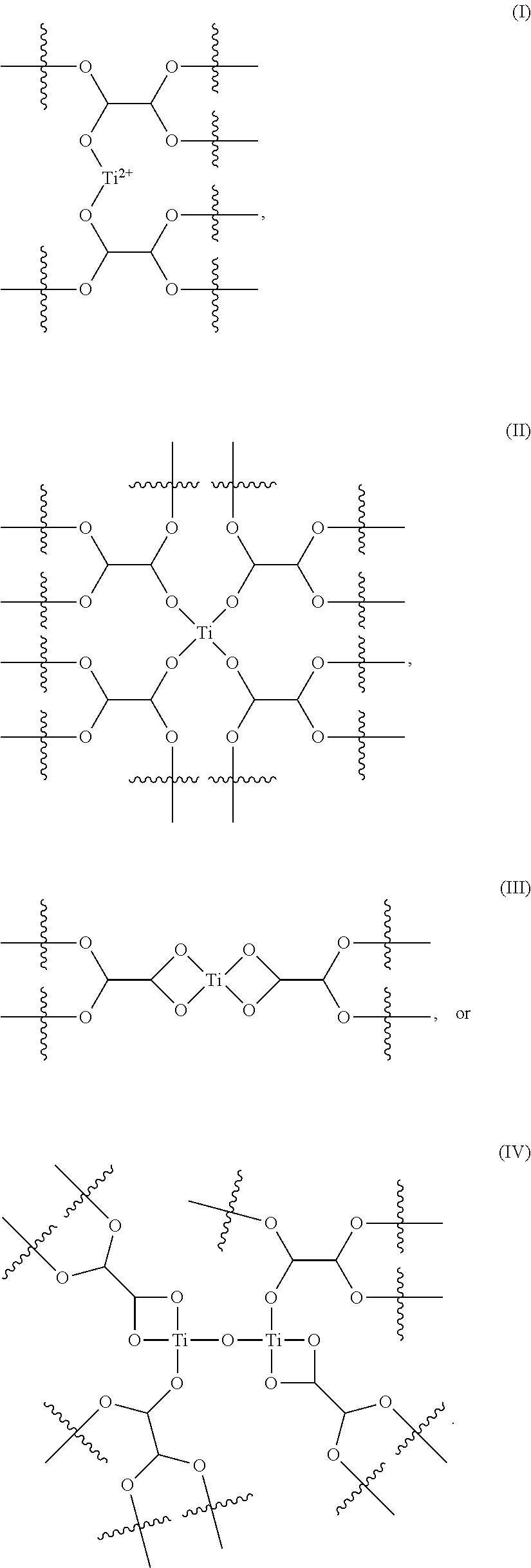Method and composition for removing uremic toxins
a technology of uremic toxins and urea, which is applied in the field of dialysis processes, can solve the problems of impaired excretion of the daily metabolic load of fixed hydrogen ions, imbalance of water and minerals, and failure of the renal system of people, so as to reduce or avoid the generation of ammonia and efficiently adsorb urea
- Summary
- Abstract
- Description
- Claims
- Application Information
AI Technical Summary
Benefits of technology
Problems solved by technology
Method used
Image
Examples
example 1
Preparation of Titanium-Glyoxal Complex
[0049]Titanium-glyoxal complex was prepared as shown in Scheme 1 by adding 4.87 g TiCl4 (99% purity) to 15.28 g glyoxal (39% glyoxal in water). The mixture was stirred for about 20 minutes and the reaction flask was immersed in an ice bath as needed to obtain the titanium glyoxal complex in a mole ratio of TiCl4:glyoxal of 1:4.
example 2
Preparation of Titanium-Glyoxal Complex on Activated Carbon
[0050]Activated carbon was coated with the titanium-glyoxal complex prepared according to Example 1 by adding about 10 g of the titanium-glyoxal solution to about 5 g of activated carbon (AC) as shown in Table 1:
TABLE 1ActivatedActivatedcarbon,carbon,CalgonCarbon,CalgonCarbon,product: HPCproduct:Ti-Gly-ACTi-glyoxalSuperHD,OLC AW,finalSamplecomplex12 × 4012 × 40dry weightNo.(g)(“CC1”) (g)(“CC2”) (g)(g)19.4385.0016—7.3527210.562—5.0366.7757
[0051]After soaking the titanium-glyoxal complex with the activated carbon for 3 hours, the mixture was washed twice with 40 ml 3.5 N HCl to remove excess titanium and glyoxal. The titanium-glyoxal coated activated carbon was filtered and dried at 37° C. for 22 hours, and then weighed to obtain the titanium-glyoxal-activated carbon (Ti-Gly-AC) final dry weight shown in Table 1.
example 3
Urea Sorption by Titanium-Glyoxal-Activated Carbon
[0052]To measure urea sorption by the titanium-glyoxal complex-coated activated carbon, 1 g of each Ti-Gly-AC prepared according to Example 2 was added to a 50 mL centrifuge tube. Next, 50 ml of peritoneal dialysis (PD) solution containing urea (60 mg / dL or 257 mg / dL urea / PD solution) was added to the tubes. Each 100 ml of the DIANEAL® Low Calcium (2.5 mEq / L) Peritoneal Dialysis Solution with 2.5% Dextrose (catalog #5B9776) contains 2.5 g dextrose hydrous USP, 538 mg sodium chloride USP, 448 mg sodium lactate, 18.3 mg calcium chloride USP, and 5.08 mg magnesium chloride USP, and has a pH of about 5.2. The tubes were then rotated and liquid samples were collected from the tubes at different time points for urea, chemical analysis and pH.
[0053]Urea sorption capacity was calculated according to the following equation:
q=([BUN]i−[BUN]t)×(60 / 28)×V / 100 / S
in which:
q is urea capacity in mg urea / g sorbent
[BUN]i is concentration of BUN in dialy...
PUM
| Property | Measurement | Unit |
|---|---|---|
| temperature | aaaaa | aaaaa |
| temperature | aaaaa | aaaaa |
| temperature | aaaaa | aaaaa |
Abstract
Description
Claims
Application Information
 Login to View More
Login to View More - R&D
- Intellectual Property
- Life Sciences
- Materials
- Tech Scout
- Unparalleled Data Quality
- Higher Quality Content
- 60% Fewer Hallucinations
Browse by: Latest US Patents, China's latest patents, Technical Efficacy Thesaurus, Application Domain, Technology Topic, Popular Technical Reports.
© 2025 PatSnap. All rights reserved.Legal|Privacy policy|Modern Slavery Act Transparency Statement|Sitemap|About US| Contact US: help@patsnap.com



